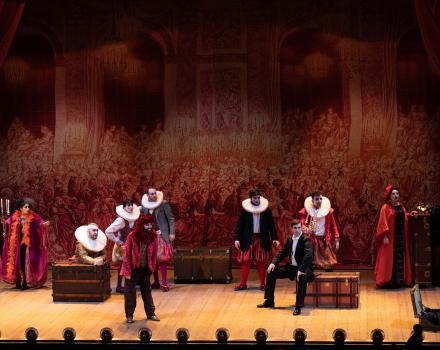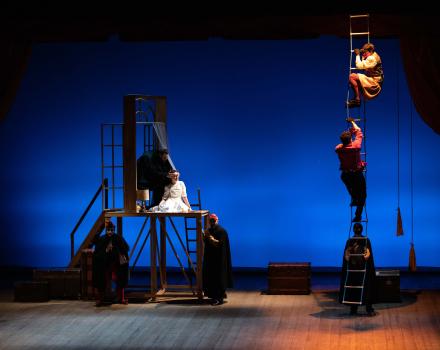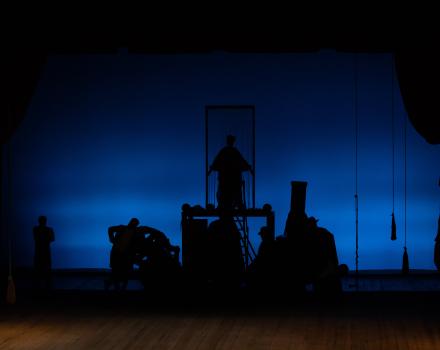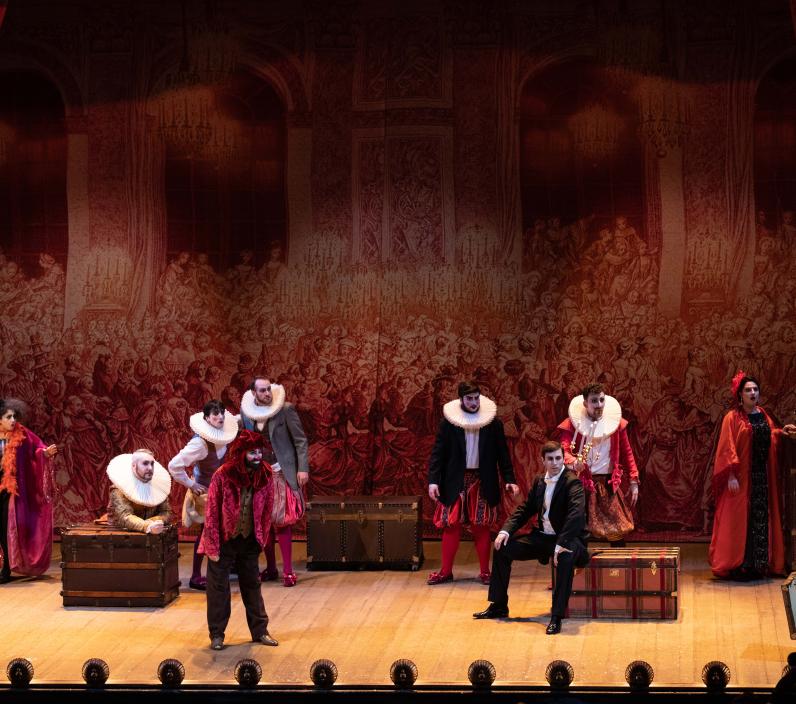

Rigoletto for children
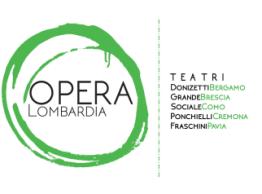
At a reprobate Duke’s court, his jester mercilessly mocks the fathers and husbands of the women he’s led astray, certain that his own daughter is safely hidden away at home. Little does he know that the Duke has already laid eyes on her...
Ingeniously framed as a play in a play, this performance of Rigoletto makes the opera’s more mature themes accessible to a young audience. Children are invited to actively participate in the staging. To find out how, simply open the pack in the activity tab.
Cast
Duca di Mantova | Francesco Congiu |
|---|---|
Rigoletto | Jaime Pialli |
Gilda | Vittoria Magnarello |
Monterone/Sparafucile | Andrea Gervasoni |
Contessa di Ceprano/Maddalena | Elena Pervoz |
Giovanna | Chiara Serangeli |
Marullo | Filippo Rotondo |
Borsa | Davide Capitanio |
Conte di Ceprano | Marco Tomasoni |
Actor | Salvatore Alfano |
Actor | Matteo Prosperi |
| ... | |
Music | Giuseppe Verdi |
|---|---|
Conductor | Cesare Della Sciucca |
Director | Manuel Renga |
Sets & Costumes | Aurelio Colombo |
Pianoforte | Giorgio Martano |
| ... | |
Video
The story
Our story...
Here comes a theatrical company, always travelling from theatre to theatre with chests full of colourful costumes, tools and bric-a-bracs. “The Duke’s Company” is how it’s called. It puts on stage a wonderful story, Rigoletto, although every member knows that every time, telling the story, they will have to feel joy and pain, to swear revenge, forgive, even find themselves in front of Mrs Death, and perish.
Every day, this group of actors carrying only their few tools, arrives at a different theatre to stage the same show, discovering new spaces each time, playing with theatrical machines, creating magic with the nothing but great secret the theatrical world hides. Once ready, they begin the show, opening to a great celebration at the Palace.
The Duke of Mantua is enjoying himself with his courtiers, dancing and drinking, eating and admiring all the beautiful ladies at his party, particularly Count Ceprano’s wife. The court jester Rigoletto supports his frenzy, piling it on and making Ceprano furious. The party is interrupted by Count Monterone, mad himself for the Duke has made fun of his daughter. When he gets arrested, he curses the Duke and his jester before being brought to prison. Rigoletto takes off his jester costume and runs home to his dear daughter Gilda to keep her safe, far from the court’s follies at all cost. He is unaware that the Duke has already laid eyes on her and is just outside the window, waiting for the right moment to come in and pursue her.
When Rigoletto leaves, the Duke, pretending to be Gualtier Maldè, a poor student, seduces the beautiful Gilda. The Duke is scared off by some noise and flees: it’s the courtiers who, convinced that Gilda is Rigoletto’s lover, want to kidnap her to poke fun at him. Just like comical acrobats, they climb on the stairs, kidnap and bring her to the Palace. When Rigoletto returns home, he is desperate, because he is not able to find his treasured daughter. Rigoletto meets a shady bandit, Sparafucile, who says himself willing to serve him at his best, before disappearing in the darkness.
At the palace, the Duke hears the night-time adventures of his courtiers and understands that the kidnapped woman brought to his room is none other than Gilda, so he joins her. Rigoletto arrives at the palace just moments after. He’s wary, in search for proof, until, desperate, he reveals the truth: Gilda is his daughter! And there she is, crying. She admits everything to her father, who collecting all his strength, swears revenge on the Duke.
A few days pass, but Gilda’s love for the Duke doesn’t fade. Rigoletto decides to show her the insincerity of his love and takes her to a tavern on the bank of the river Mincio. Once there, they glimpse the Duke in the arms of Sparafucile’s beautiful sister Maddalena. Gilda finally has proof of his cheating. Her father sends her home, as he still has something to take care of. He plans to have the Duke killed by the bandit to complete his revenge, ignoring that Sparafucile and Maddalena have resolved to kill Rigoletto himself, rob him and save the Duke, with whom Maddalena is in love.
Unbeknown to her father, Gilda returns to discover the siblings’ plan and, in a great love gesture, decides to sacrifice herself for the Duke and her father. A stormy night of thunders, lightning and gale covers that sad moment’s suffering. Rigoletto comes back, takes the trunk from Sparafucile, certain it contains the Duke’s body. But opening it, he makes the saddest discovery: inside is Gilda, who with her last words, says goodbye to her father. Rigoletto is left bereft and returns home.
The actors wrap up and head to the next theatre, well aware that all they have shown is false, as all theatre plays are bound to be, but nonetheless expresses true and deep feelings, as true as real life.
Insights
Director's Notes
By Manuel Renga, Director
The production of Rigoletto, The Mysteries of the Theatre started with a question: how to adapt Rigoletto to an audience of children while remaining faithful to Verdi’s original plot, which introduces themes such as murder, revenge, and violence against women? Our objective was, therefore, to find kid-friendly approaches through the magical and mysterious techniques of theatre. Hence, we decided that the protagonists would be a troupe of actors performing the opera, rather than just Rigoletto, Gilda, or the Duke so that our actors could use and display the captivating machinery and techniques that are hidden behind the scenes to surprise children and to convey the original turbulent plot of the opera.
Rigoletto, The Mysteries of the Theatre is a two-layered visual performance: the first is evident by the troupe of actors and singers of the 'Duke’s Theatrical Company' who demonstrate the makings of an opera, and the second is their performance of Rigoletto. The artistic decision to create this extra layer to Giuseppe Verdi’s acclaimed opera was to expose our young audience to the developments that occurred before and during the show (cast members dressing-up, doing physical warm-ups, and practising theatre techniques and stage illusions), but more importantly, to reveal the theatrical magic that transforms the fictitious into reality. To expose this transformational magic, we exploited scenographic components: front curtain, stage, ground row, backdrops, lights and shadows, wind and thunder effect machine, props, as well as using a puppet-double for the more intimate and tragic scenes, such as in the death of Gilda.
Gallery

